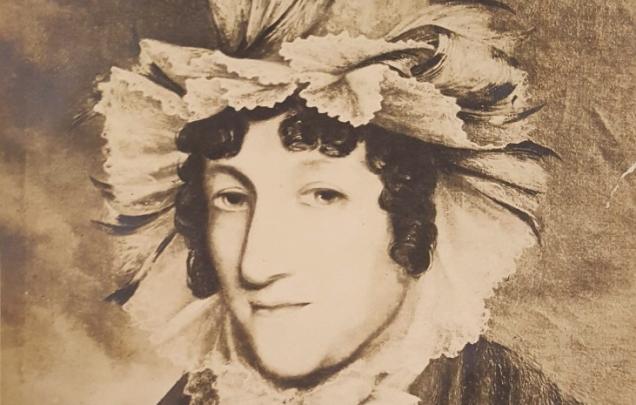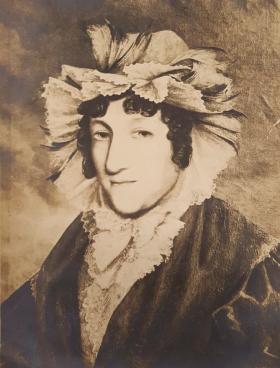Who is Esther?
Students analyse a portrait of convict Esther Abrahams to begin to understand the changes in her life.
This is the student activity 1 of 7 of the Esther Abrahams: a life transformed learning activity.

Who is Esther?
Look carefully at Esther’s portrait, painted in the 1830s.

Answer these questions:
- Describe the clothes she is wearing?
- What fabrics are used?
- What does this imply about her social status or background?
- What further details of the portrait support this?
- At what stage of Esther’s life do you think this portrait was painted?
Now read Esther’s story and see if your assumptions were accurate.
Esther was born in London in 1767. She was working as a milliner (hat maker) when she stole 24 yards of black silk lace in 1786. She was sentenced to seven years transportation and arrived in Sydney on the Lady Penryhn with the First Fleet. While she was in prison in London waiting to be transported, she had a baby, a little girl she called Rosanna, who came with her on the ship to New South Wales. While she was on the ship she met Lieutenant George Johnston. George was a British Marines Officer and Esther was a convict but their relationship lasted their whole lives. Their first child, a little boy named George, was born in January 1790.
Their home in Sydney was a beautiful estate called Annandale Farm, where they lived with their eight children; Rosanna, George, Robert, Julia, David, Maria, Isabella and Blanche.
George was one of the leaders in the dramatic overthrow of Governor Bligh in 1808, sometimes called the ‘Rum Rebellion’. For a little while after this he became the Lieutenant-Governor of New South Wales and Esther became the ‘First Lady’. For a few months their home in Annandale became the official residence, like Government House. After this George left the army and they concentrated on farming, business and managing their properties. George died at their home in 1823 when he was 58. Esther lived for another 23 years, and in 1846 died at her son David’s home, called Georges Hall after his father, in Sydney aged 79.
Consider this:
- After looking at Esther’s portrait did you think she was wealthy? She was! There were hints in the portrait – the amount and type of fabric (lace and silk-like ribbons) in her clothing and bonnet, the gold brooch and that she could afford to have her portrait painted.
- Did you guess she was had been a convict? That is a surprise after looking at her portrait. Her life was certainly transformed!
Some experts suggest there are questions about Esther’s guilt regarding the crime she committed in England in 1786. Perhaps she was innocent?
Answer these questions:
- How would you feel if you had been wrongly accused of a crime?
- How would you feel if you had been wrongly accused of a crime AND sent to the other side of the world?
Imagine you are Esther and write a letter to your (Esther’s) parents and extended family you left behind in England in 1788, explaining your new life and how you ended up in NSW.
Compare Esther’s life to that of fellow First Fleet convict Ann Martin by studying Ann’s life in Ann Martin: a female flogged learning activity.]